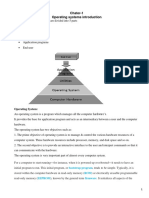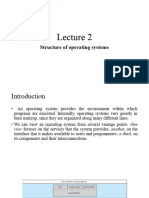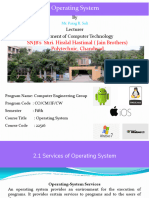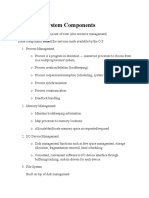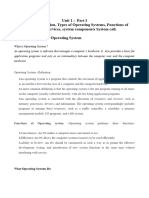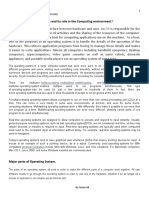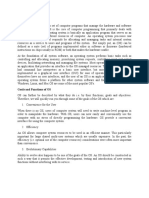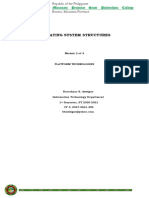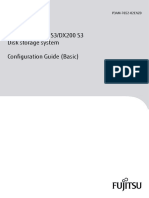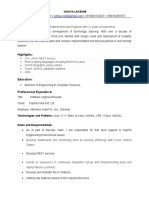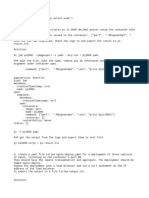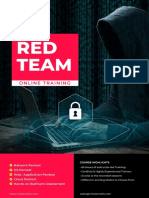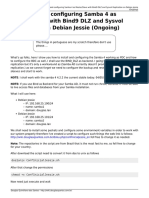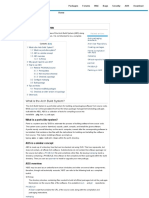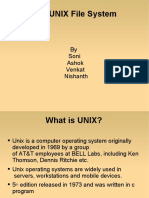0% found this document useful (0 votes)
23 views15 pagesUnit - 1
This document provides an overview of operating systems, detailing their role as intermediaries between users and computer hardware, and outlining key concepts such as processes, system calls, and operating system services. It describes the user and system perspectives on operating systems, the types of user interfaces, and the various services provided by operating systems for program execution, I/O operations, and resource management. Additionally, it covers process management, including process states, control blocks, and scheduling mechanisms.
Uploaded by
hemanthnk04Copyright
© © All Rights Reserved
We take content rights seriously. If you suspect this is your content, claim it here.
Available Formats
Download as PDF, TXT or read online on Scribd
0% found this document useful (0 votes)
23 views15 pagesUnit - 1
This document provides an overview of operating systems, detailing their role as intermediaries between users and computer hardware, and outlining key concepts such as processes, system calls, and operating system services. It describes the user and system perspectives on operating systems, the types of user interfaces, and the various services provided by operating systems for program execution, I/O operations, and resource management. Additionally, it covers process management, including process states, control blocks, and scheduling mechanisms.
Uploaded by
hemanthnk04Copyright
© © All Rights Reserved
We take content rights seriously. If you suspect this is your content, claim it here.
Available Formats
Download as PDF, TXT or read online on Scribd
/ 15

